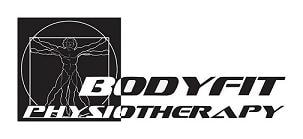Pulled Hamstring or Hamstring strains are extremely common among athletes and to a lesser extent among gym goers. This type of injury affects the tendons or large muscles at the back of your thigh, causing pain, swelling, muscle spasms, and bruising. It usually occurs in runners, football players, soccer players, and skaters. Recovery time depends on how severe the injury is.
What Are Hamstring Strains?
This common leg injury affects one or more of the hamstring muscles. The back of your thigh consists of three muscles that extend (or straighten) the hip and bend the knee. These muscles can get stretched too far during exercise. Minor strains may not hurt too much, but the more severe ones can cause extreme pain and affect your everyday life.
Most people with hamstring strains experience pain in the back of the thigh, bruising, tenderness, and a snapping or popping feeling. This injury is usually caused by muscle imbalances or weakness, muscle fatigue, poor conditioning, overtraining and explosive movements, such as jumping or sprinting. The risk is higher for teen athletes, older athletes, dancers, runners, and people who don’t warm up and stretch before exercise.
How to Prevent and Treat Hamstring Strains
In general, hamstring strains heal on their own. Applying ice packs and resting your leg during the first 3 days after the injury can speed up recovery. In case of severe pain and swelling, you may have to take anti-inflammatory drugs but always consult with your doctor about taking medication. Wrap the affected area with a compression bandage and take a break from exercise. Once you’re past the initial 3-day inflammatory stage you may have to practice stretching and strengthening exercises for hamstrings to help recovery and prevent future injuries. When your pain has decreased enough, stretch your muscles gently and focus on strengthening your hamstrings.
According to health experts and clinical studies, the Nordic Hamstring exercise can help prevent and treat hamstring strains. This type of exercise eliminates strength imbalances. Athletes with strength imbalances are up to five times more likely to develop hamstring strains. Performing this exercise at least three times a week can help prevent further injuries.
To find out about Nordic Hamstring exercises please email us at alex@bodyfitphysio.co.nz to have one of our physiotherapists call you back or simply call 0800 11 00 31.
